What's Behind the Incredible Success of Cardinals Starting Pitcher Miles Mikolas?

Last Sunday night in St. Louis, Cardinals reliever Jordan Hicks distilled baseball, in its current iteration, down to one pitch. Well, two pitches, to be exact. Hicks hit 105 mph on the radar gun twice, in a five-pitch at-bat against Odubel Herrera. He threw 11 more pitches clocked at 100 mph or higher in 1 1/3 innings, closing out a 5–1 win. His five pitches to Herrera registered 104, 105, 104, 105 and 103 mph. Herrera, as you might imagine, struck out. It was the modern game personified in one at-bat.
The very next night, the Cardinals sent Hicks’ perfect counterpoint to the mound. If Hicks is the beau ideal in today’s MLB, then Miles Mikolas is a throwback to the Roosevelt administration. Either one. And one night after Hicks lit up the radar gun in a fashion matched only by Aroldis Chapman in MLB history, Mikolas proved that what worked in 1905 and 1935 still works in 2018.
Mikolas on Monday twirled an absolute gem, tossing a shutout against the Royals. He allowed just four hits in his nine innings, striking out nine and walking one. The living, breathing anachronism moved to 6-0 with the win, lowering his ERA to 2.24 and his WHIP to 0.98. He’s eighth in the league in ERA and 12th in WHIP, making him one of eight pitchers in the top 12 in both.
Mikolas isn’t just an outlier compared against his flamethrowing teammate. In fact, Mikolas, too, can perform impressive feats of velocity, with his four-seam fastball averaging 95.3 mph, and his two-seamer checking in at 94.5 mph. In an era characterized by whiffs and dominated on the mound by strikeout artists, though, Mikolas bucks the trend. The seven other pitches in the top 12 in ERA and WHIP—Justin Verlander, Max Scherzer, Gerrit Cole, Charlie Morton, Chris Sale, Luis Severino and Corey Kluber—all own strikeout rates of at least 26.8%, with six of them at 30% or better. Scherzer and Cole have fanned more than 40% of the batters they’ve faced this season. They are mound dominance in vogue, the zeitgeist of pitching of the late 2010s.
Not so for Mikolas. Even after setting a new career-high with his nine strikeouts against the Royals, he has a strikeout rate of 19.4% this season. The last starting pitcher with a strikeout rate less than 20% and an ERA as low as Mikolas’ 2.24 for a full season was Chris Carpenter in 2009. Before that, you have to go back to Greg Maddux in 1997. All told, there have been just 12 such seasons since 1978 among pitchers who made at least 20 starts. There are 232 instances in the MLB record book, with all but 44 taking place before the younger Roosevelt passed away. In fact, twice as many happened before Franklin Roosevelt was born in 1882 (25) than have happened in the last 40 years.
Mikolas first broke into the majors as a reliever with the Padres in 2012. He made 25 appearances that year, but just two the next year. In 2014, he made 10 starts with the Rangers, totaling a 6.44 ERA and 1.43 WHIP in 57 1/3 innings. Without an offer from an MLB club before the 2015 season, Mikolas headed for Japan, signing with the Yomiuri Giants of the Central League. It was there that he turned his career around.
Mikolas was one of the best pitchers in Japan from 2015 through 2017, going 31–13 in 62 starts, and pitching to a 2.18 ERA and 0.99 WHIP in 424 2/3 innings. Mikolas fanned 378 batters with Yomiuri, good for a strikeout rate of 22.4%. But it was there that Mikolas honed the skill that defines his brand of dominance.
In three years with Yomiuri, Mikolas faced 1,683 batters. He walked 69 of them, which translates to a 4.1% walk rate. Mikolas walked more than 10% of the batters he faced as a reliever with the Padres in 2012, and he racked up a 7.1% walk rate as a starter with the Rangers in 2014. It wasn’t his only problem, but it was part of why he was knocked out of the majors. With that cleaned up, Mikolas starred in Japan and resurrected his career. This season, he looks nothing like the pitcher who couldn’t get an offer from an MLB team three years ago.
Thanks to the powers that be at MLB and YouTube, we can compare the Mikolas of old to today’s version. We’ll take a look at footage from the first start of Mikolas’ career, way back on July 2, 2014, with the Rangers against the Orioles, and compare that against what he is doing this season with the Cardinals.
Mikolas used to throw a four-seamer, two-seamer, curveball, slider and changeup, the same repertoire that he features to this day. That’s where the similarities end. Mikolas 1.0 pitched out of the stretch at all times. That could have come from his history as a reliever, or as an effort to simplify his delivery, but it’s a significant difference from modern Mikolas, who uses a full windup with no one on base. He also used to set up on the extreme first-base side of the rubber, whereas now he’s more or less right down the middle.
The next difference isn’t quite so obvious, but it’s just as important. Old Mikolas threw almost straight over the top. He still has a high release point, partially because he’s 6’ 5”, but his arm is further away from his body, closer to a three-quarters angle when he delivers the pitch. We can look at the difference in both GIF and screenshot form. Mikolas 2.0 comes first.
The screenshots below show just how much Mikolas’ arm slot has changed since he flamed out of the majors after 2014.
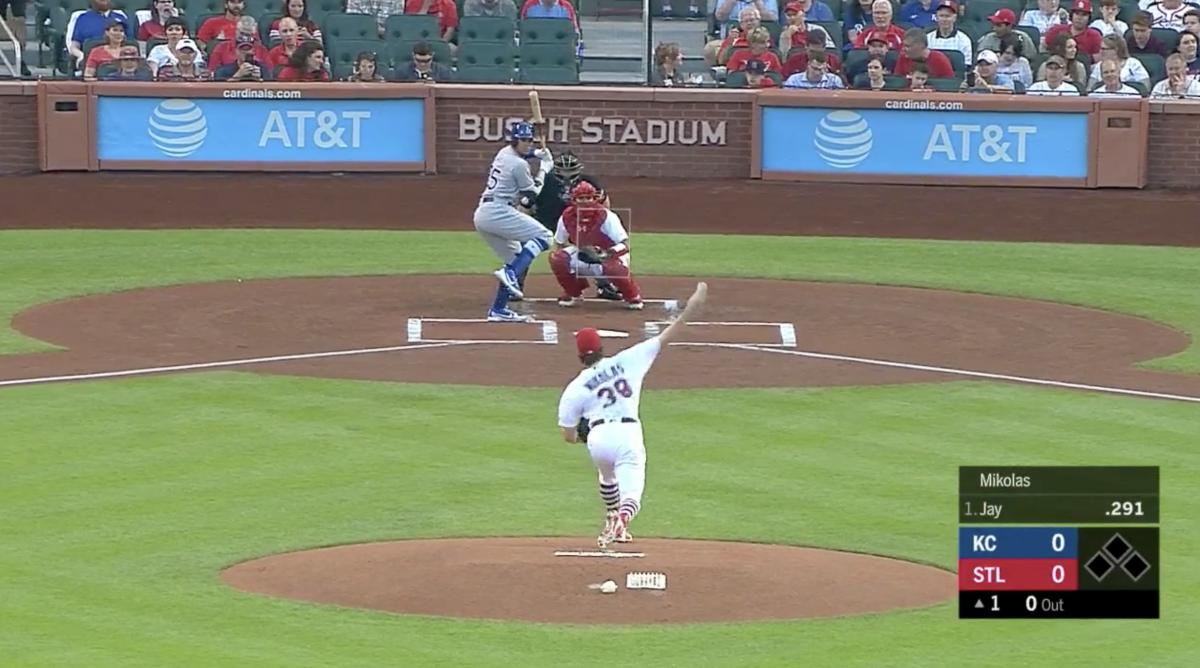
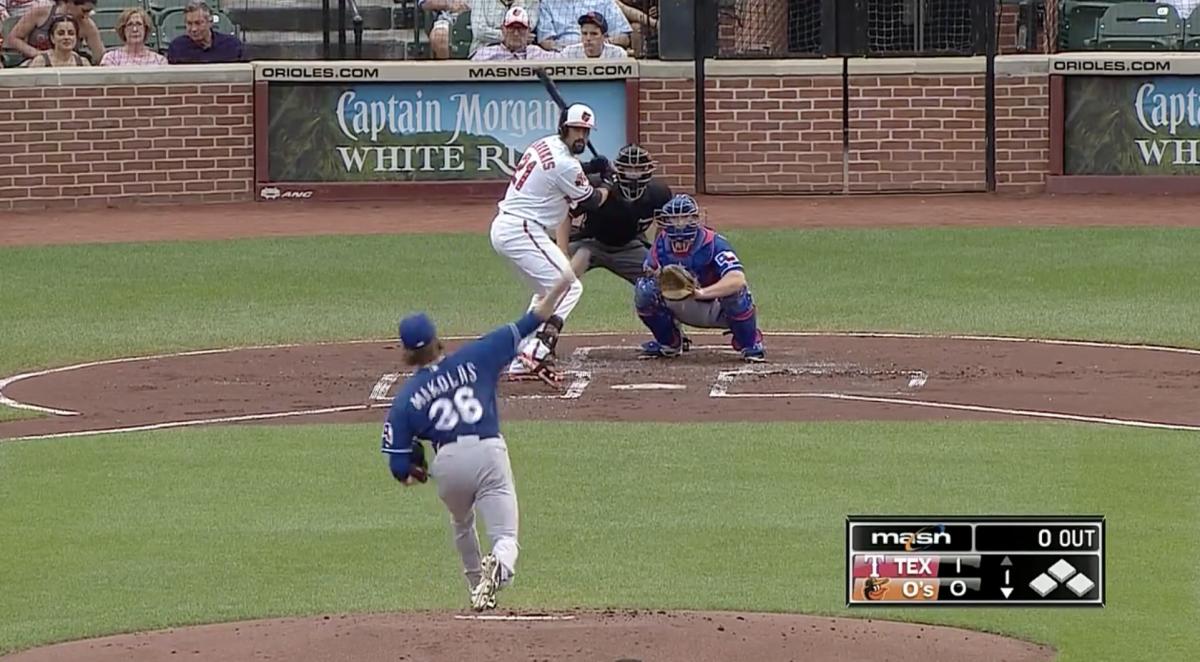
We can see it in even starker contrast in his release point charts, courtesy of Statcast. The first is for this year, and the second is for 2014.
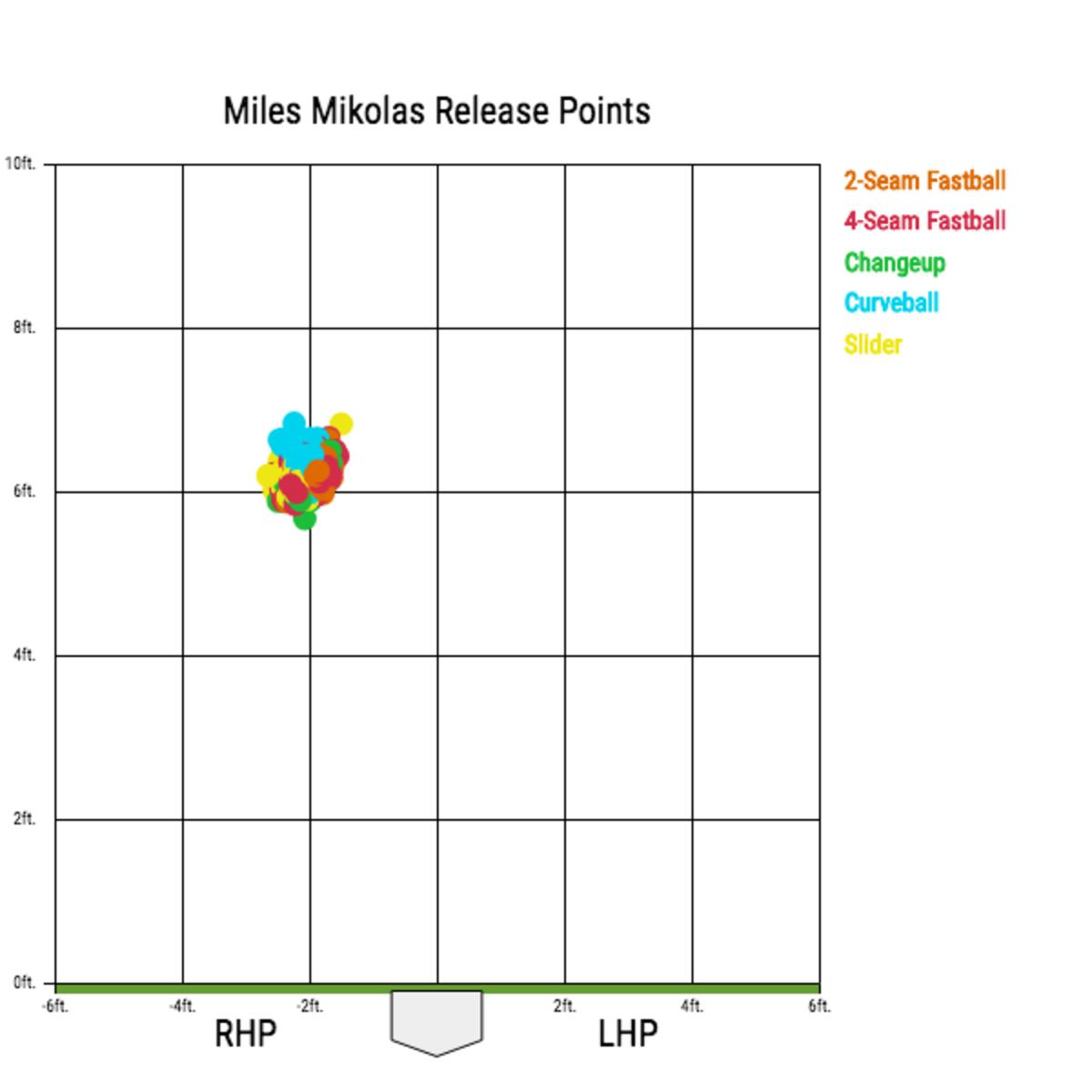
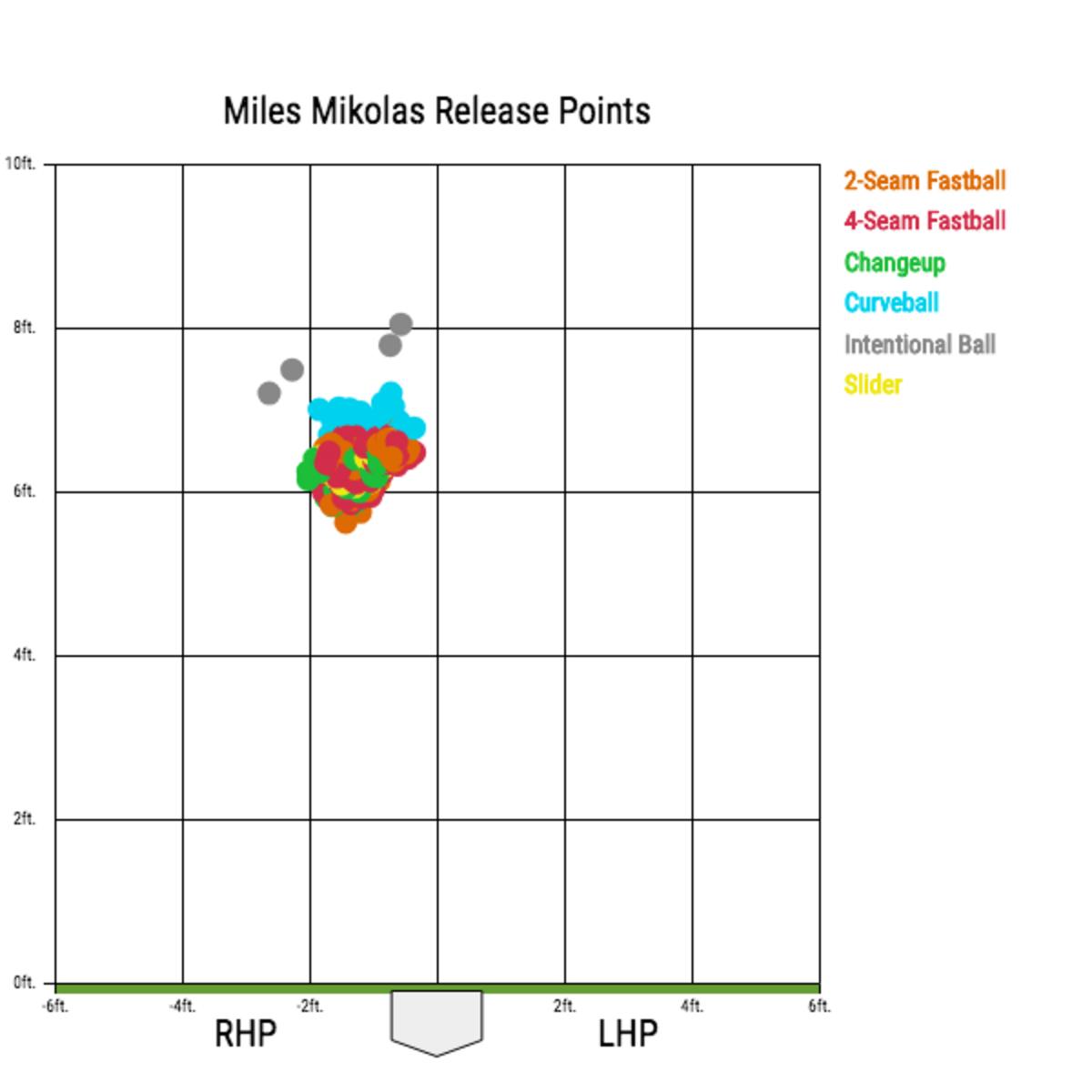
There’s another piece of piece of the puzzle behind Mikolas’ transformation in those release point charts. Look at how scattered his release points were in 2014. Each horizontal line in the chart is two feet from the ones above and below it. That means that Mikolas’ release points for his five pitches fell anywhere inside a range of one and a half feet. A repeatable delivery and consistent release points from the very foundation of pitching success, and Mikolas couldn’t find either in his first go-round in the majors.
Compare that with the 2018 chart; that’s a beautiful cluster of release points. Mikolas’ north-south range of release points is tighter, and he’s also letting go of his pitches at a much more stable east-west spot, as well. Know what follows a repeatable delivery and consistent release points? Consistent command and control.
Mikolas threw just 49.8% of his pitches in the strike zone that season while with the Padres. He improved dramatically with the Rangers, with 55.2% of his pitches in the zone, but his control was selective. Mikolas threw a first-pitch strike to just 62.4% of the batters he faced that season, and when he fell behind he got knocked around. Hitters put 20 of his 95 1–0 pitches in play that season, getting nine hits, including two homers. When hitters got him to 2-0, they went 6-for-10 with another bomb.
This season, Mikolas is throwing a first-pitch strike 71.3% of the time, tops in the majors, and 56.2% of his pitches have been in the strike zone, also the highest rate in the league. What’s more, he’s commanding his pitches to the edge of the zone, without going out of it, better than ever. For proof, we turn to the following zone profiles, provided by Brooks Baseball. The first is this year, and the second is from 2014.
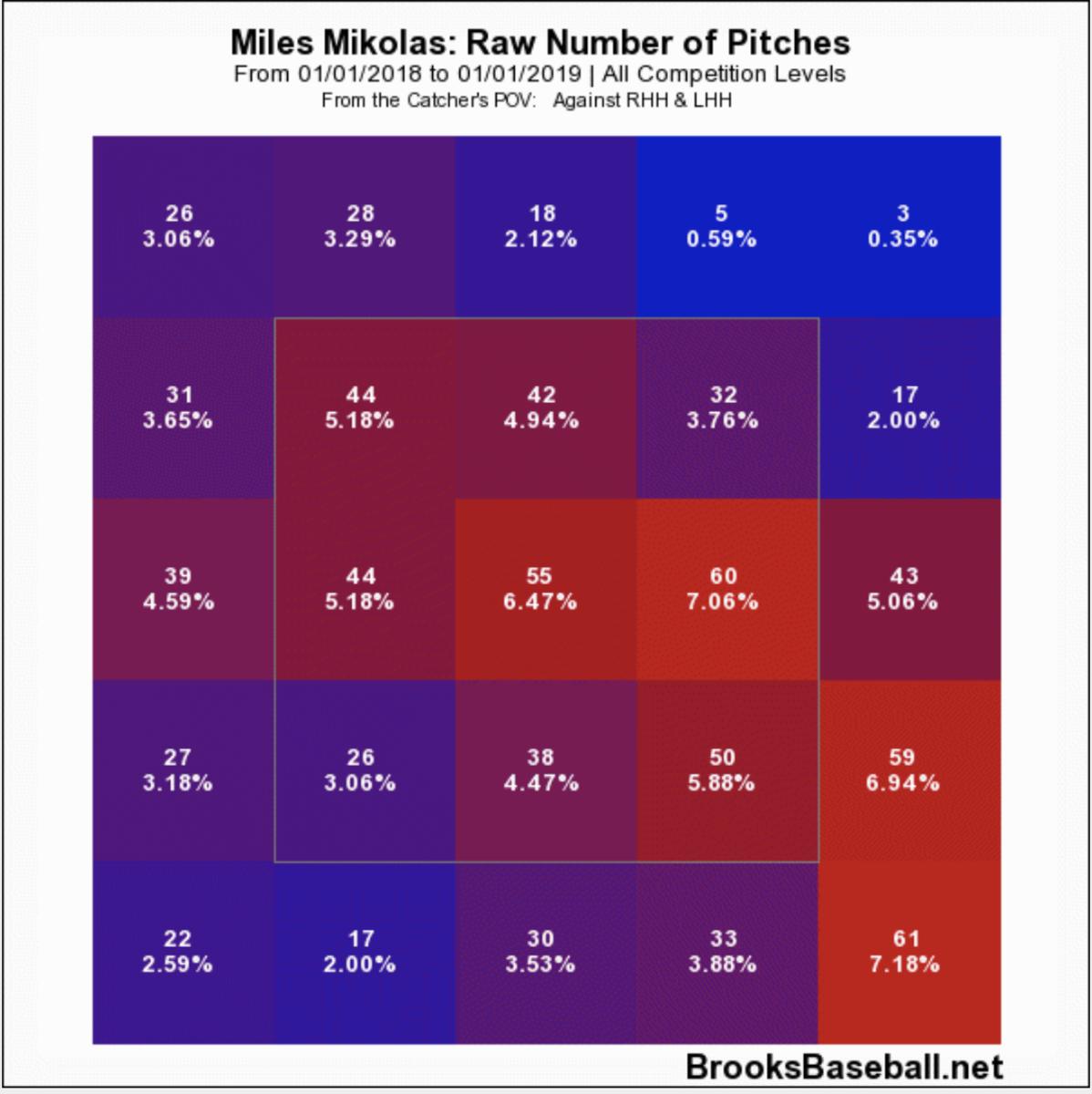
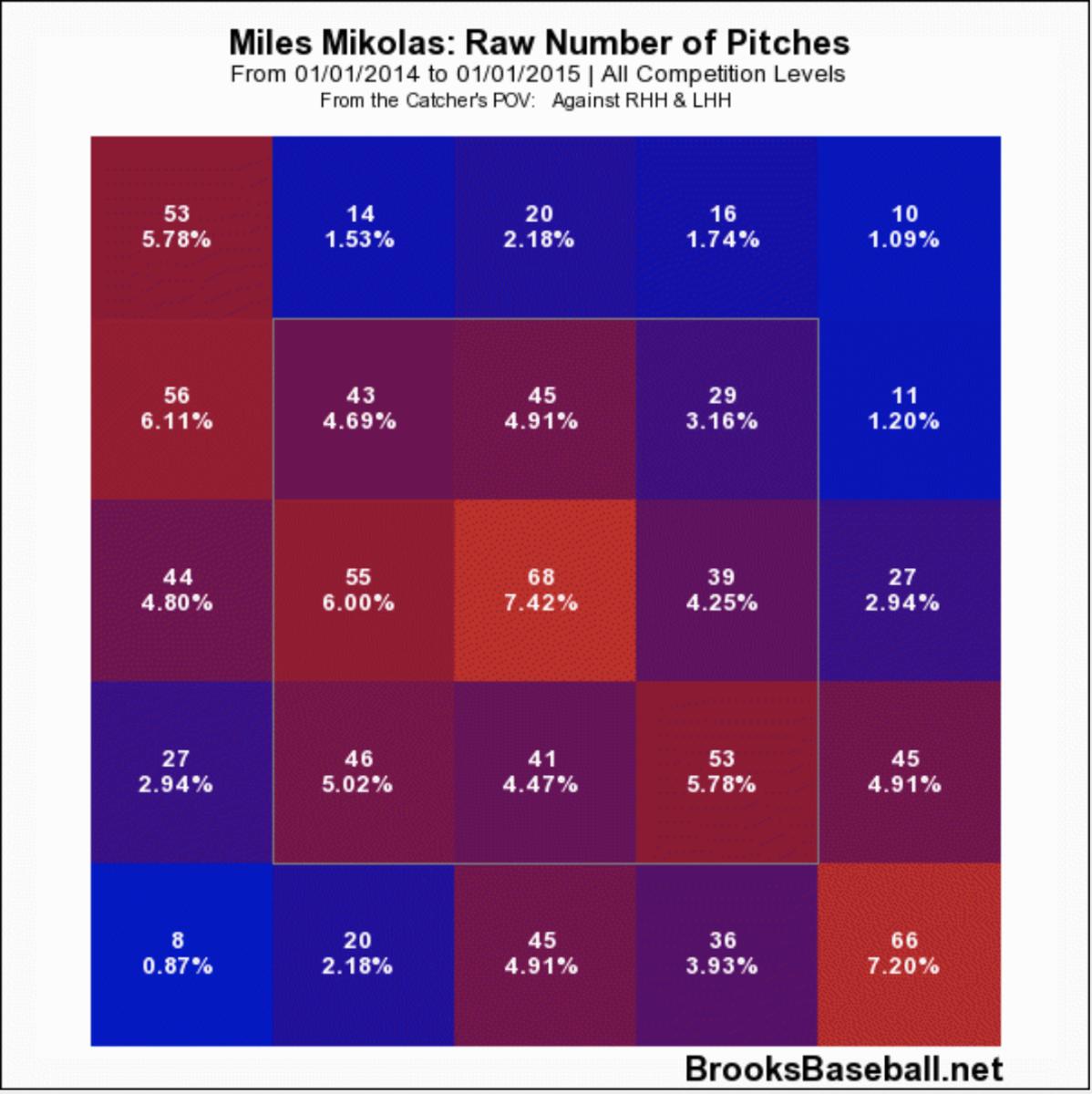
Look at the hot spot on the right side of the strike zone in the 2018 chart, which is the outside corner to a righty and inside corner to a lefty. Now, keep that in mind as you look at the next zone profile, this one for 2018 from Statcast.
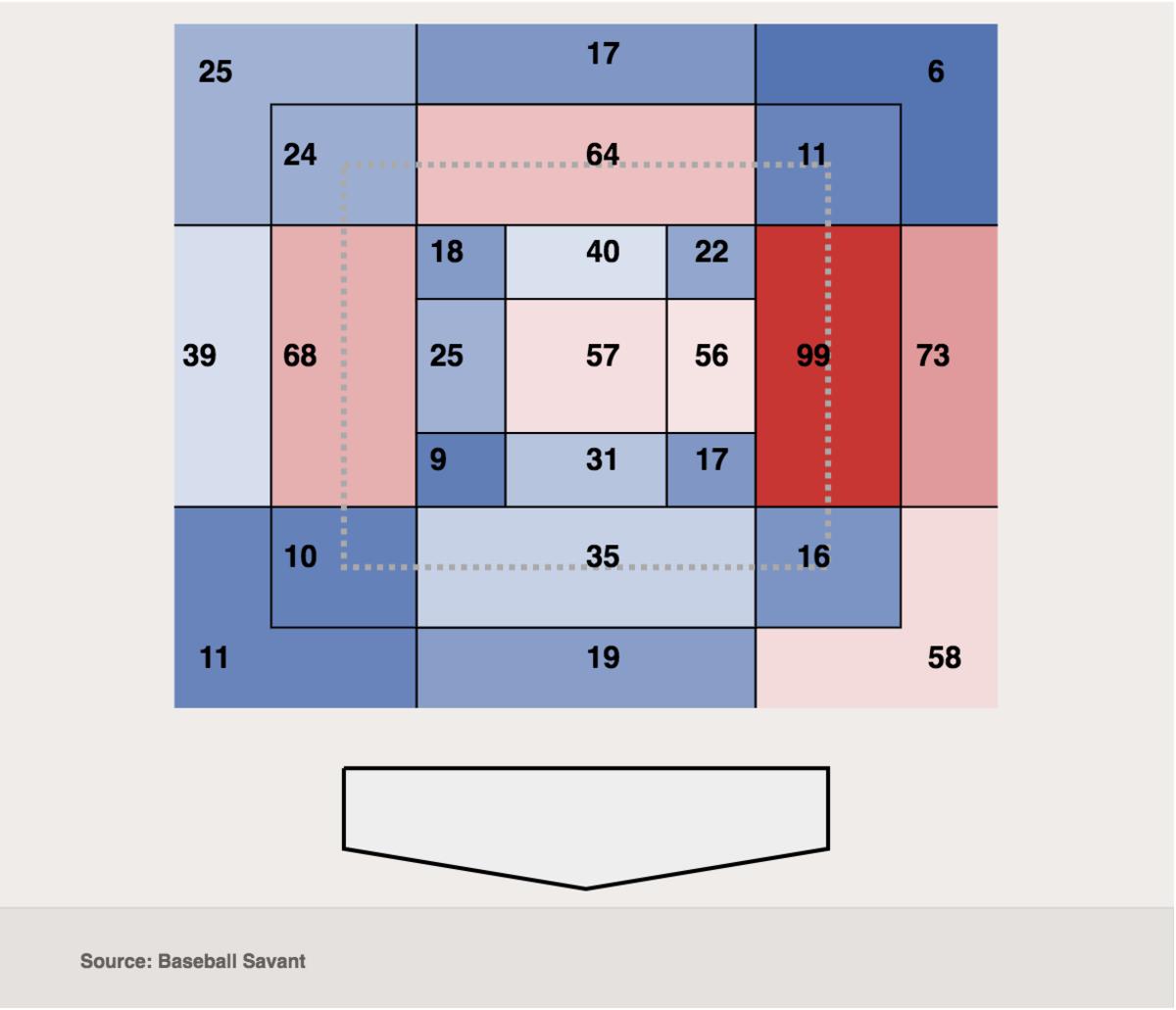
The dotted line represents the outer reaches of the strike zone. Again, we see here in even greater detail that Mikolas is living on the edges of the zone, and as a pitcher with a reputation for making players hit their way on base, he’s getting plenty of swings at these pitcher’s pitches, generating weak contact. Hitters are actually swinging at fewer of his pitches outside the zone than they did in 2014, but his whiff rate is up to 9.2% from 8.2%, and his ground-ball rate is at 51.7%, 11th-highest in the majors.
Few people, if anyone, predicted when the Cardinals inked Mikolas to a two-year, $15.5 million deal this winter that they might have secured the best deal of the offseason. Nine starts into the Mikolas 2.0 Experience, which runs counter to everything we have come to know about pitching dominance in 2018, it appears that just might be the case.
